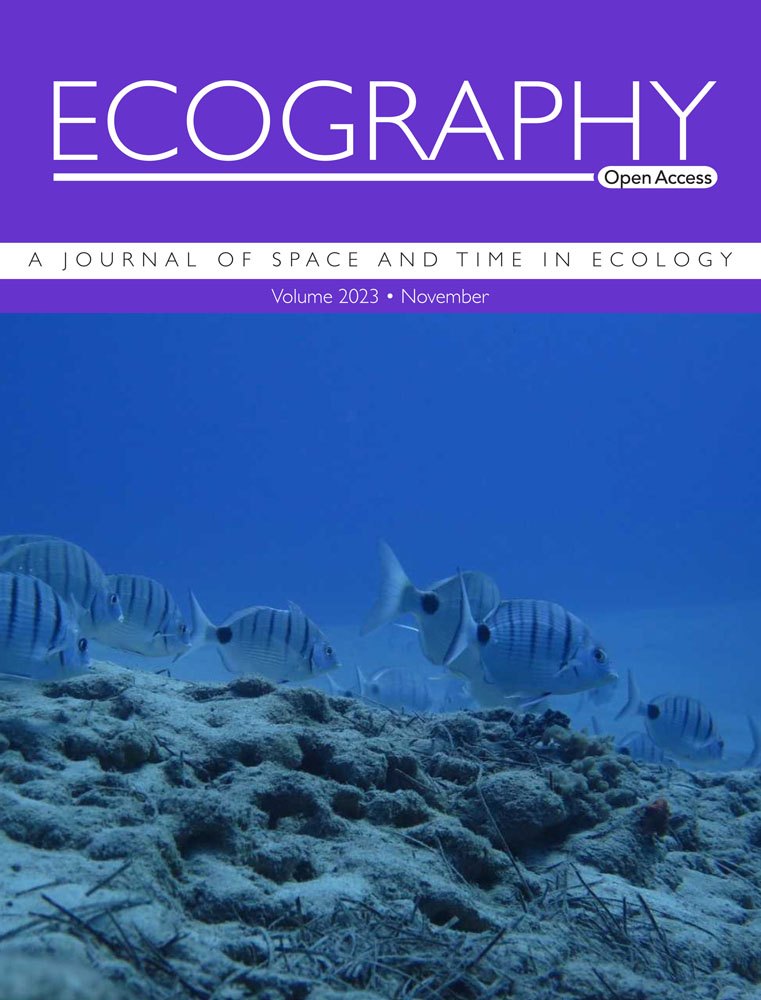猎物的动态风险:利用GPS智能手机定位解开人类和美洲狮存在对鹿行为的影响
IF 5.4
1区 环境科学与生态学
Q1 BIODIVERSITY CONSERVATION
引用次数: 0
摘要
被捕食物种通过平衡来自捕食者和人类的风险,根据人类使用的梯度调整它们的行为。在狩猎季节,猎物通常对人类表现出强烈的反捕食者反应,但在郊区可能会对人类介导的资源产生耐受性。此外,在人类活动频繁的地区,如果顶级捕食者避开这些地方,可能会降低捕食风险。本研究考察了骡鹿(Odocoileus hemionus)对人类及其主要捕食者美洲狮(美洲狮)风险的行为反应,并结合研究地点、个体风险暴露和人类习惯的风险水平差异进行了分析。我们使用三个不相互排斥的假设来构建我们的研究框架:(H1)中性影响,(H2)人类屏蔽(由美洲狮回避驱动的人类耐受),以及(H3)超加性风险(人类回避主导行为)。我们控制了鹿的物候和死亡时间,认识到鹿的行为随这些时间动态而变化。利用GPS项圈数据量化时空遇狮风险,利用GPS智能手机数据量化时空遇狮风险和使用强度。我们的研究结果支持H2和H3,强调了风险暴露和人类使用强度在地点和个人水平上的差异的重要性。鹿适应地管理美洲狮的风险,但人类成为主要的感知风险,因研究地点而异。在美洲狮密度较高和人类狩猎压力较低的地点,鹿表现出基于个体暴露于人类活动的反捕食者反应,但在狩猎季节,对美洲狮的耐受性增加。相反,在美洲狮密度较低和人类狩猎压力较大的地点,人类是主要风险。鹿的行为在人类使用的梯度中存在显著差异,受到细微的人类存在和捕食风险的影响,这可以通过人类智能手机数据辨别出来。本文章由计算机程序翻译,如有差异,请以英文原文为准。
Dynamic riskscapes for prey: disentangling the impact of human and cougar presence on deer behavior using GPS smartphone locations
Prey species adjust their behavior along human-use gradients by balancing risks from predators and humans. During hunting seasons, prey often exhibit strong antipredator responses to humans but may develop tolerance in suburban areas to exploit human-mediated resources. Additionally, areas with high human activity may offer reduced predation risk if apex predators avoid such locations. This study examined mule deer Odocoileus hemionus behavioral responses to risks from humans and their primary predators, cougars Puma concolor, contextualized by differences in risk levels between study sites, individual risk exposure, and human habituation. We framed our investigation using three non-mutually exclusive hypotheses: (H1) neutral impact, (H2) human shielding (human tolerance driven by cougar avoidance), and (H3) super-additive risk (human avoidance dominating behavior). We controlled for deer phenology and diel period, recognizing that deer behavior varies with these temporal dynamics. Spatiotemporal cougar encounter risk was quantified using GPS collar data, while spatiotemporal human encounter risk and use intensity were quantified using GPS smartphone data. Our results supported H2 and H3, emphasizing the significance of site- and individual-level variation in risk exposure and human use intensity. Deer managed cougar risk adaptively, but humans emerged as the dominant perceived risk, varying by study site. At the site with higher cougar density and lower human hunting pressure, deer exhibited antipredator responses to humans based on individual exposure to human activity, except during hunting season, when tolerance for cougars increased. Conversely, humans were the dominant risk at the site with lower cougar density and greater human hunting pressure. Deer behavior varied significantly across a gradient of human use, influenced by nuanced human presence and predation risks, which were discernible using human smartphone data.
求助全文
通过发布文献求助,成功后即可免费获取论文全文。
去求助
来源期刊

Ecography
环境科学-生态学
CiteScore
11.60
自引率
3.40%
发文量
122
审稿时长
8-16 weeks
期刊介绍:
ECOGRAPHY publishes exciting, novel, and important articles that significantly advance understanding of ecological or biodiversity patterns in space or time. Papers focusing on conservation or restoration are welcomed, provided they are anchored in ecological theory and convey a general message that goes beyond a single case study. We encourage papers that seek advancing the field through the development and testing of theory or methodology, or by proposing new tools for analysis or interpretation of ecological phenomena. Manuscripts are expected to address general principles in ecology, though they may do so using a specific model system if they adequately frame the problem relative to a generalized ecological question or problem.
Purely descriptive papers are considered only if breaking new ground and/or describing patterns seldom explored. Studies focused on a single species or single location are generally discouraged unless they make a significant contribution to advancing general theory or understanding of biodiversity patterns and processes. Manuscripts merely confirming or marginally extending results of previous work are unlikely to be considered in Ecography.
Papers are judged by virtue of their originality, appeal to general interest, and their contribution to new developments in studies of spatial and temporal ecological patterns. There are no biases with regard to taxon, biome, or biogeographical area.
 求助内容:
求助内容: 应助结果提醒方式:
应助结果提醒方式:


